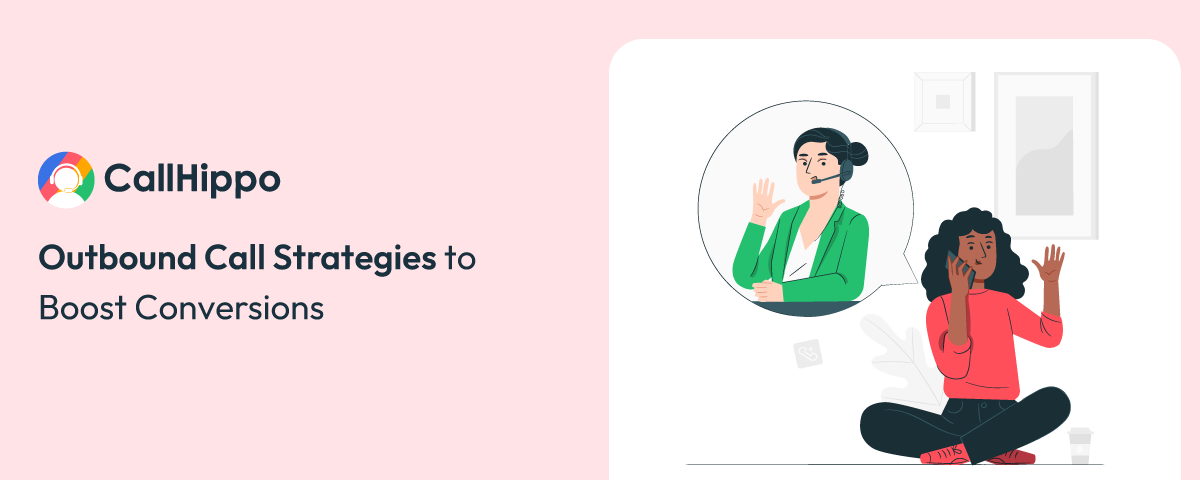Outbound calling is an essential business strategy for reaching new customers. It offers direct, personal communication that emails and ads can’t match. However, it comes with its challenges.
Unsolicited calls often make potential customers cautious, and capturing their attention during a short call can be challenging. Moreover, the success rate is often low – only 2% of cold calls result in a successful sale. This underscores the need for businesses to refine their outbound call strategies to improve effectiveness and boost conversion rates.
So, how can you improve your outbound call strategy? Let’s begin with the basics.
What Is an Outbound Call?
An outbound call is when a company initiates a phone call to a customer or prospect, typically for sales, marketing, customer service, or follow-up purposes. It’s a proactive way for businesses to gather customer feedback from and engage potential clients.
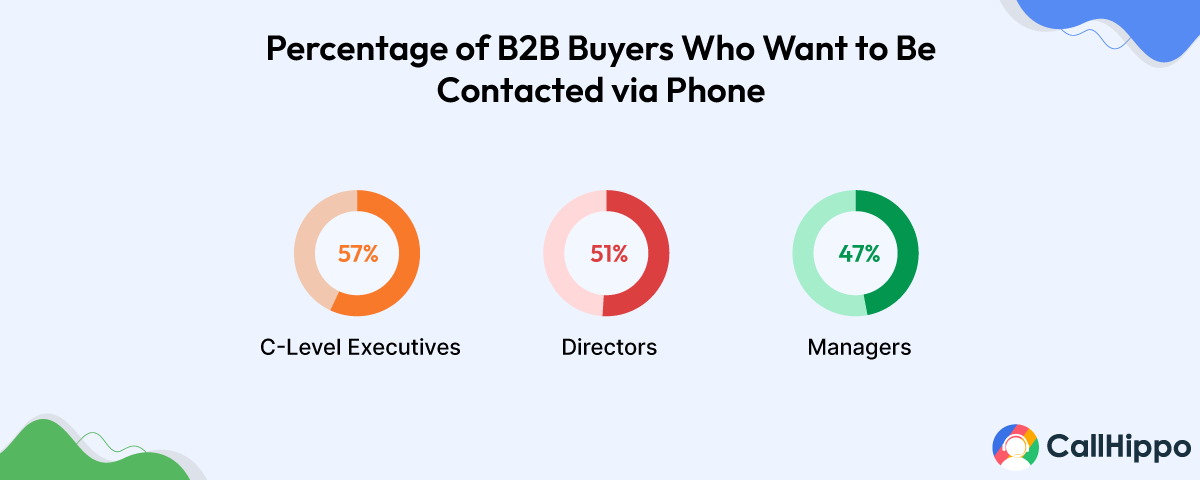
Outbound calls play a vital role in generating new business leads and fostering ongoing customer relationships. In fact, 57% of C-level executives and 51% of directors prefer being contacted by phone. By reaching and making outbound calls directly, you can personalize their approach, address specific needs, and build stronger connections with your audience, ultimately leading to improved customer satisfaction.
Before each call, spend five minutes researching your prospect's recent company news or social media activity. Incorporate this information into your sales pitch and use it to tailor your opening, ask relevant questions, and demonstrate a genuine interest in their business challenges.
10 Best Outbound Calling Strategies
There’s no one-size-fits-all outbound contact strategy for success. However, combining these ten tips can significantly boost your conversion rates and enhance your overall successful outbound call strategy.
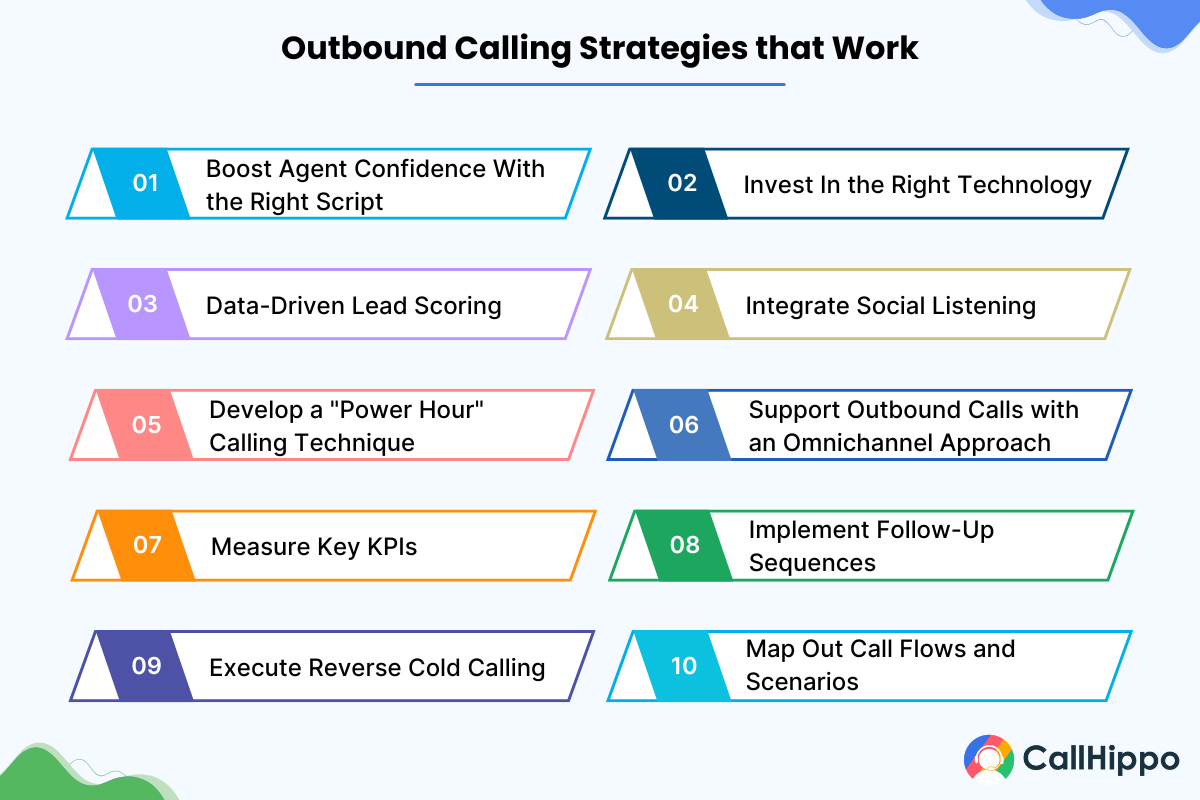
1. Boost Agent Confidence With the Right Script
A well-crafted script enhances agent confidence by offering structured guidance and pre-prepared responses. This allows agents to handle objections and navigate conversations smoothly, resulting in more effective and persuasive interactions that drive higher sales performance. Here are the key elements of a good outbound call script.
– A Compelling Opening
A good sales pitch begins with a powerful opening that quickly captures the prospect’s attention. For example,
I noticed that your recent expansion might need scalable solutions. Our platform can help you manage growth effortlessly. Is this a good time to discuss how it fits your expansion plans?.
– Addressing Common Pain Points and Objections
The body of the script should tackle common pain points and objections. Agents need clear, concise responses to typical concerns. Consider this example for budget constraints:
– A Strong Closing
A powerful closing is essential. A well-designed script should help agents effectively summarize key points and suggest specific follow-up actions.
– Open-Ended Questions
Throughout the script, incorporate open-ended questions to engage prospects in dialogue. This technique helps agents gather valuable information and tailor their pitch. Questions like “What’s your biggest challenge in [relevant area]?” can reveal crucial insights.
2. Invest In the Right Technology
High-volume contact centers and high-velocity sales teams need robust outbound call center software to maximize their efficiency. The right technology can significantly improve connection rates, boost productivity, and capture more opportunities. Here are key features to look for when refining your outbound contact strategy.
– Dynamic Scripts
Static scripts often fall flat when prospects raise unexpected objections. Dynamic scripts offer agents customized responses that align with the ongoing conversation’s direction. This approach ensures more natural interactions that address specific customer needs, increasing the chances of a successful outcome.
– AI Auto Rotate Caller ID
Sales teams often struggle when prospects don’t answer calls from numbers they don’t recognize. This can significantly impact call success rates. CallHippo’s AI Auto Rotate Caller ID feature intelligently displays local numbers on prospects’ caller IDs. This makes your calls appear more familiar and increases the likelihood they’ll be answered, an essential component of an effective outbound call strategy.
– Conference Calling
B2B sales often require input from multiple decision-makers, and relying solely on individual calls can slow down the process. Conference calling capabilities allow your team to bring all stakeholders together to address concerns collectively and accelerate the decision-making process. This is especially useful for complex sales situations that need input from multiple departments.
– Power Dialer
Every second counts in high-volume outbound call centers. Automated dialing systems streamline the outbound calling services process by instantly connecting agents to the next prospect after finishing a call. This eliminates manual dialing time and allows your team to make more connections per hour and focus their energy on what really matters – engaging with potential customers.
– Voicemail Drop
Leaving voicemails one by one is time-consuming and can lead to inconsistent messaging. CallHippo’s voicemail drop feature allows agents to leave pre-recorded messages with a single click. This ensures consistent, professional follow-ups while freeing up valuable time for live conversations.
3. Data-Driven Lead Scoring
Potential customers differ in their purchasing readiness. While some are prepared to make a purchase, others may never convert. It also assesses and ranks prospects based on how likely they are to become customers. It considers various factors, including.
- The size and industry of the company.
- Website and email interactions.
- Social media activity.
- Past purchases or conversations with your team.
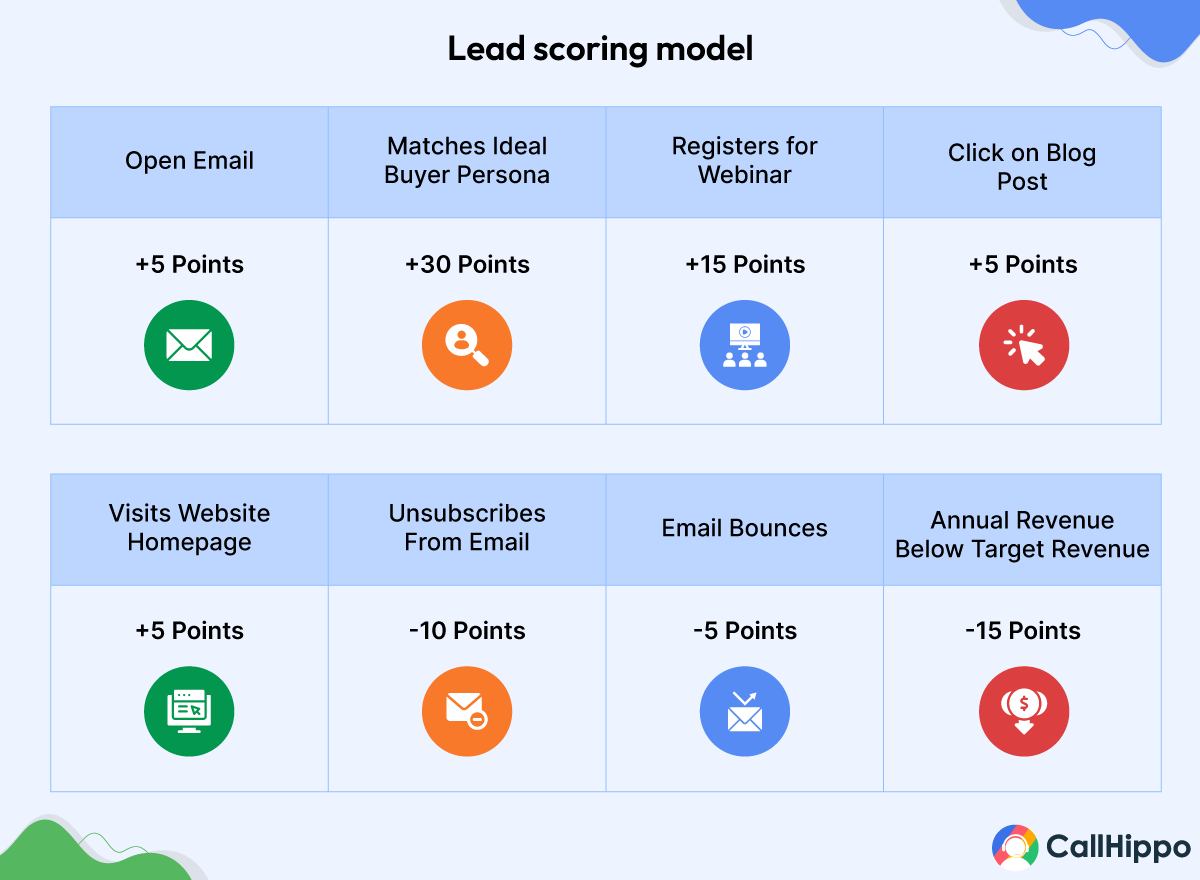
A good lead generation and scoring system allows your outbound sales team to prioritize the most promising leads. This strategy prevents time wasted on prospects who aren’t ready to buy. It also enables tailored approaches for each lead’s specific situation, improving the overall effectiveness of your outbound contact strategy.
4. Integrate Social Listening
Before making calls, use social media listening tools to gain insights about your prospects. These tools can help you track conversations related to your industry, product mentions, and discussions about competitors. Additionally, identify potential leads who are discussing relevant challenges or seeking solutions and create a database of prospects’ interests and recent activities.
Use this information to tailor your approach to demonstrate understanding of the prospect’s situation and timing your outreach to coincide with their needs. This allows for more targeted, relevant conversations that can significantly improve your outbound sales call success rate and contribute to higher customer satisfaction levels.
With AI Sales Agent
- Engage Prospects 24/7
- Personalized Pitches
- Smart Follow-Ups
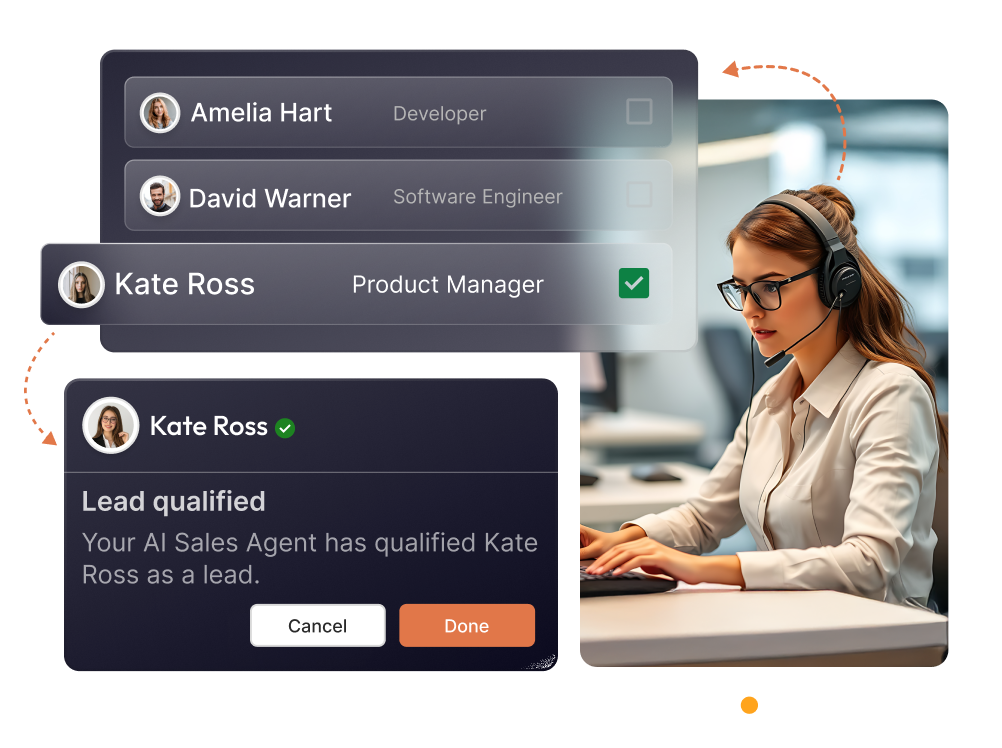
5. Develop a “Power Hour” Calling Technique
Identify the most effective time window for your outgoing calls and concentrate your efforts during this period. Research often indicates that 4:00 to 5:00 PM is typically the best time for cold calls, with 11:00 AM to 12:00 PM also being a highly effective time slot.
However, these times may vary depending on your industry and target audience. Experiment with different time slots and track your success rates to determine your optimal “power hour.” Once identified, incorporate this into your outbound call strategy.
- Block this time in your calendar daily and treat it as non-negotiable.
- Prepare a prioritized list of high-value prospects to contact during this hour.
- Eliminate all distractions like silencing notifications and closing unnecessary tabs.
- Set clear goals for the number of calls to make and conversations to have.
- Have all the necessary information and resources at your fingertips.
- After each power hour, briefly review your performance and note areas for improvement.
Consistently applying this focused approach can significantly boost your outbound calling effectiveness and help you reach more decision-makers when they’re most receptive.
6. Support Outbound Calls with an Omnichannel Approach
Decision-makers receive numerous cold calls daily, which makes it challenging for any single caller to be memorable. An omnichannel strategy addresses this issue by establishing multiple touchpoints with prospects across various platforms before and after your call. It ensures that when you connect by phone, you’re a recognizable entity rather than an unfamiliar voice.
Before the call
- Start with a quick, personalized email introducing yourself and your company.
- Connect on LinkedIn and engage with their content (like or comment on a post).
After the call
- Follow up with an email summarizing your conversation.
- Share something valuable, like a relevant case study or whitepaper.
- Keep the engagement going on social media.
7. Measure Key KPIs
Making calls without tracking their effectiveness limits your ability to improve and demonstrate value. Measuring appropriate Key Performance Indicators (KPIs) provides clear insights into your outbound call process strengths and improvement areas. You can use this to refine your outbound call strategy continuously to improve conversion rates over time.
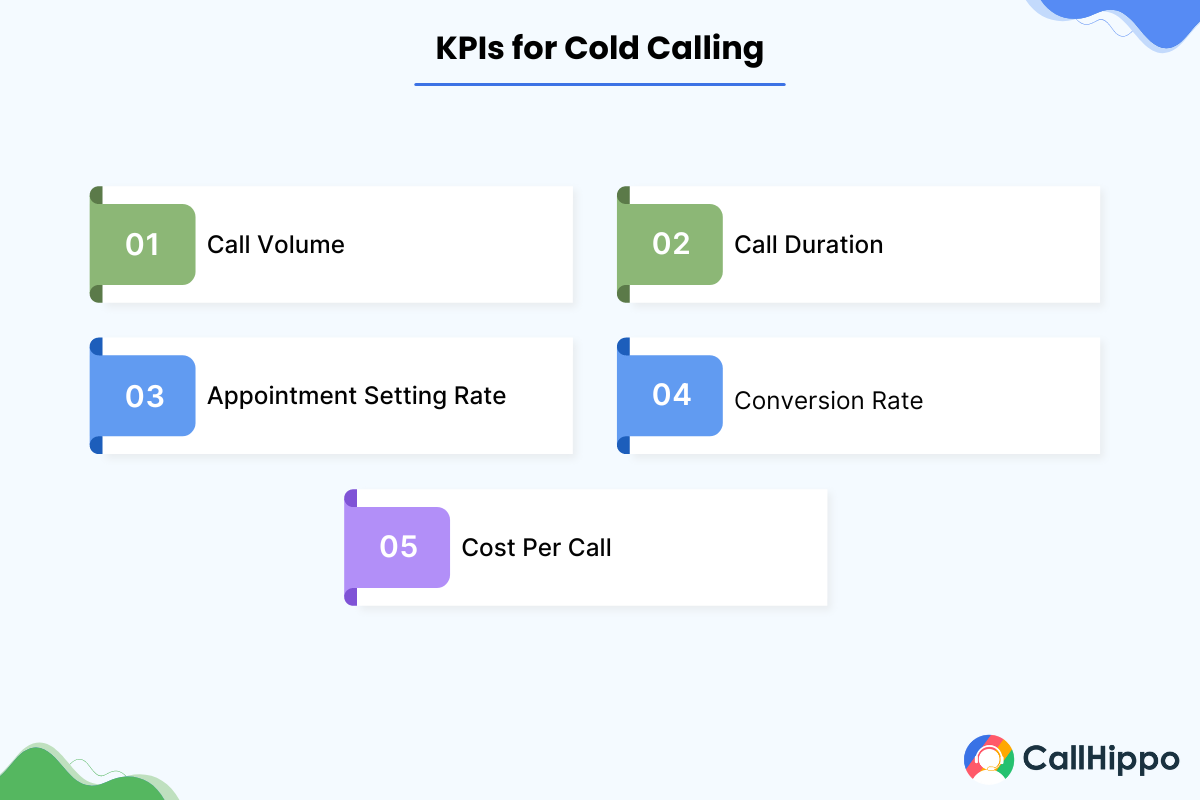
Here are some metrics you should monitor.
- Conversion rate: Out of all your calls, how many turn into meetings or sales?
- Decision-maker reach rate: Are you actually talking to the people who can say “yes”?
- Average call duration: Are you keeping people engaged or getting shut down quickly?
- Callbacks requested: Are prospects interested enough to want to continue the conversation?
At the end of each week, look at these numbers. Which days did you perform best? What time of day seems to work well for you? Listen to recordings of your most successful calls and try to pinpoint what worked. Then, use these insights to tweak your outbound contact strategy for the next week.
8. Implement Follow-Up Sequences
Closing a sale typically requires an average of five follow-up calls. Sadly, 48% of salespeople never even make a single follow-up attempt. This highlights a significant missed opportunity in the sales process. On the other hand, a strategic follow-up sequence ensures you’re maximizing every opportunity, preventing promising leads from slipping through the cracks.
To create an effective follow-up sequence as part of your outbound call strategy.
- Plan a series of 5-7 touchpoints over 2-3 weeks
- Vary your communication channels (phone, email, social media)
- Provide value in each interaction (industry insights, relevant content)
- Space out your contacts to avoid appearing desperate
- Personalize each follow-up based on previous interactions
- Know when to move on if there’s a consistent lack of engagement
9. Execute Reverse Cold Calling
Traditional cold calling puts you at a disadvantage – you’re interrupting prospects who aren’t expecting your call. Reverse cold calling flips this dynamic by making prospects come to you instead.
It uses content marketing and thought leadership to attract inbound interest. When prospects reach out to you, they’re already interested in what you offer, making conversations more productive and increasing your chances of success.
To implement reverse cold calling,
- Create valuable content addressing your target audience’s pain points
- Share insights on social media and industry forums
- Speak at relevant events or host webinars
- Encourage satisfied customers to refer you to their network
- Optimize your online presence for search engines
- Use lead magnets to capture the contact information of interested prospects.
- Follow up quickly when someone shows interest in your content or services
Note: Reverse cold calling might not work every time, so use it in combination with other strategies within your overall outbound call strategy.
10. Map Out Call Flows and Scenarios
Common in customer support, call flow mapping also benefits sales teams significantly. It prepares you for various conversation paths to increase the success of your outbound sales calls. It also equips you to handle unpredictable situations, maintain conversation control, and seize unexpected opportunities.
To implement effective call flow mapping as part of your outbound contact strategy,
- Analyze past calls to identify recurring scenarios and objections
- Develop a flowchart outlining potential conversation directions
- Include decision points for upselling or addressing cancellation requests
- Prepare open-ended questions to guide conversations back on track
- Create a quick reference guide for common objections and their rebuttals
- Establish clear criteria for when to escalate calls to managers
- Schedule regular team meetings to share successful approaches and update the flowchart
 Supercharge Your Sales Game! Discover proven strategies to boost your outbound lead generation
Supercharge Your Sales Game! Discover proven strategies to boost your outbound lead generationConclusion
Mastering outbound calling requires a thoughtful approach that goes beyond just picking up the phone. From crafting effective sales pitches to timing your calls strategically, each element plays a crucial role in boosting success rates. Using the right tools, measuring key performance metrics, and maintaining consistency in follow-up are also essential. These strategies, when combined, can help you connect with prospects more effectively, overcome objections, and drive results.
FAQs
1. How to structure an outbound sales call?
Start with a strong opening that quickly captures attention. Identify the prospect’s specific challenges and present relevant solutions. Use open-ended questions to better understand their pain points. Handle objections confidently with prepared responses. And close with a clear summary of benefits and propose specific next steps or actions.
2. What is the 3 2 1 sales method?
The 3 2 1 sales method involves making 3 calls, sending 2 emails, and leaving 1 voicemail within a set timeframe, typically a week. This ensures consistent follow-up without overwhelming prospects. It balances persistence with respect for the prospect’s time and preferences.
3. What is the AAA technique in sales?
The AAA technique in sales stands for Acknowledge, Align, and Assure. First, acknowledge the prospect’s concern or objection. Then, align yourself with their perspective to build rapport. Finally, assure them by offering a solution or addressing their concern directly. This helps build trust and overcome objections effectively.

Subscribe to our newsletter & never miss our latest news and promotions.
